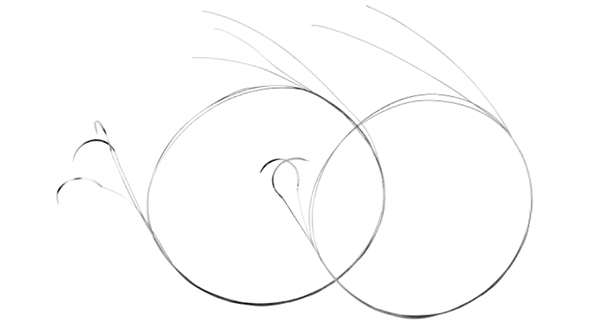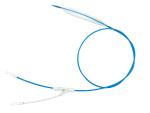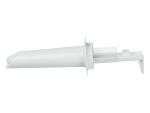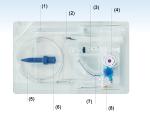Disposable Subcuticular Suture

Features of Subcuticular Suture
1. The intradermal suture is a non-absorbable, sterile suture that is biologically compatible with the tissue it closes so the tissue won't react negatively to the suture.
2. With a tensile strength better than that of steel wire, the nitinol suture is unlikely to break.
3. Surgeons needn't worry about the uneven pull on both sides of the wound, as the subcuticular suture aligns with itself automatically.
4. The suture wire can be left within the subcuticular tissue for as long as it takes the wound to heal. Cut off the wire and remove it when it is no longer needed.
5. Ultra-smooth surface facilitates wire removal, without dragging or cutting surrounding tissue.
6. Subcuticular suture is a technique that can achieve scar-free incision closure if done successfully.
Clinical Applications
1. Gynecology
Used to close abdominal surgical incisions during cesarean section or other gynecological operations such as perineotomy
2. General Surgery
Transcervical thyroidectomy, mammary gland surgery, thoracic surgery, laparoscopic surgery, and other surgical operations that require subcuticular suturing
3. Traumatology
Close wounds caused by accident or violence
4. Burns and Scalds Treatment
Skin grafting
5. Plastic Surgery
Repair incisions, remove old scars
| Specification | Suture Wire Diameter Range (mm) | Specification | Suture Wire Diameter Range (mm) | ||
| Conventional | Metric system | Conventional | Metric system | ||
| 12-0 | 0.01 | 0.001-0.009 | 2-0 | 3 | 0.300-0.349 |
| 11-0 | 0.1 | 0.010-0.019 | 0 | 3.5 | 0.350-0.399 |
| 10-0 | 0.2 | 0.020-0.029 | 1 | 4 | 0.400-0.499 |
| 9-0 | 0.3 | 0.030-0.039 | 2 | 5 | 0.500-0.599 |
| 8-0 | 0.4 | 0.040-0.049 | 3.4 | 6 | 0.600-0.699 |
| 7-0 | 0.5 | 0.050-0.069 | 5 | 7 | 0.700-0.799 |
| 6-0 | 0.7 | 0.070-0.099 | 6 | 8 | 0.800-0.899 |
| 5-0 | 1 | 0.100-0.149 | 7 | 9 | 0.900-0.999 |
| 4-0 | 1.5 | 0.150-0.199 | 8 | 10 | 1.000-1.099 |
| 3-0 | 2 | 0.200-0.249 | 9 | 11 | 1.100-1.199 |
| 2-0/T | 2.5 | 0.250-0.299 | 10 | 12 | 1.200-1.299 |

 English
English العربية
العربية Français
Français Русский
Русский Español
Español Português
Português



